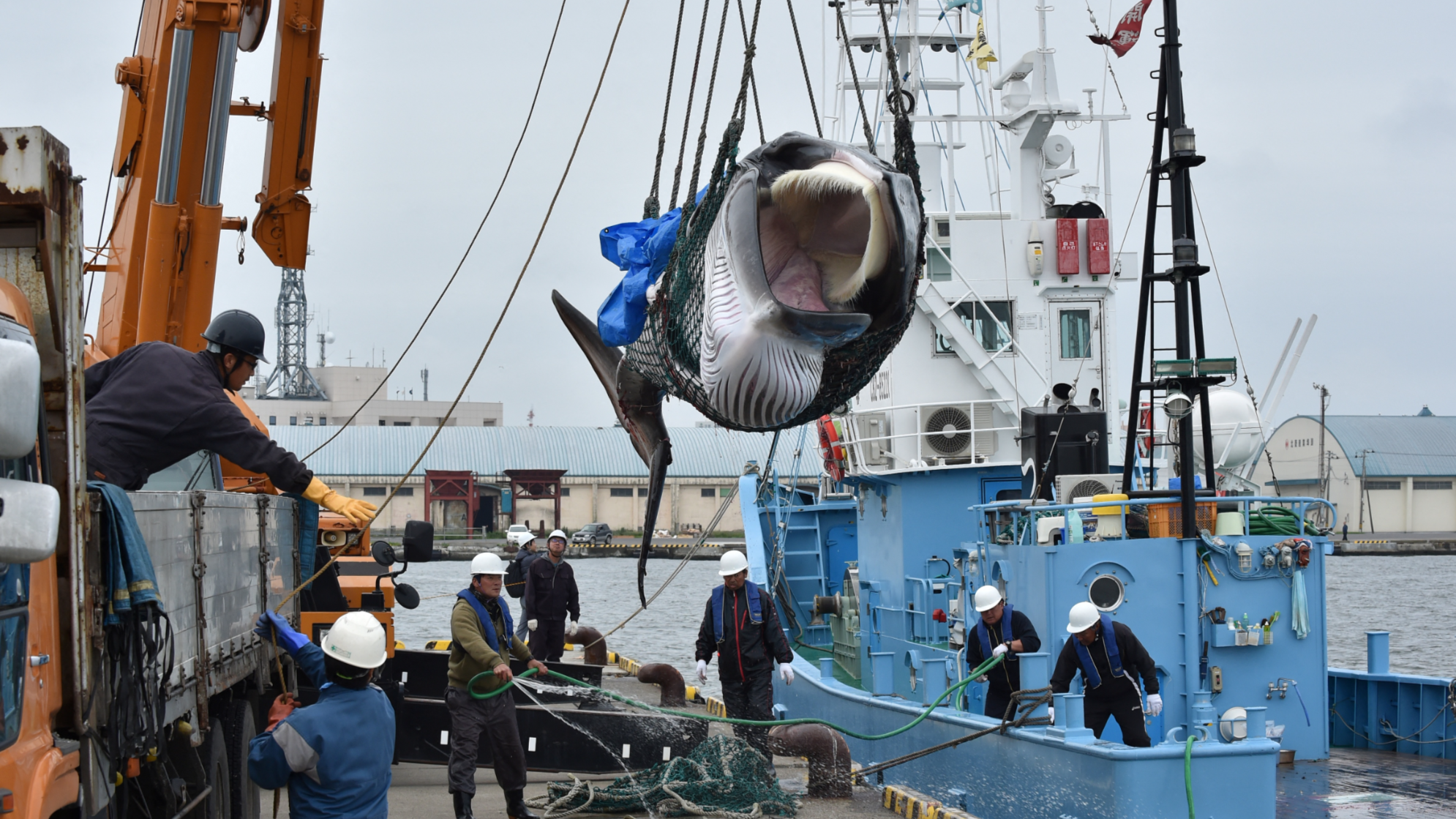
The Kangei Maru, Japan’s new whaling mothership, embarked on its first hunting trip from Shimonoseki Port in Yamaguchi Prefecture on Tuesday.
At the departure ceremony, Hideki Tokoro, president of commercial whaling operator Kyodo Senpaku, which owns the ship, emphasized the importance of the ship in preserving offshore mothership whaling. The Kangei Maru is set to catch whales off the coast of the Tohoku region.
Kyodo Senpaku has been catching Bryde’s and sei whales but the firm’s production of whale meat remains around 1,600 tons. For the fiscal year ending March 2023, sales were 3.1 billion yen with an operating income of 200 million yen
Mothership whaling refers to the role of the larger vessel in supporting smaller, more maneuverable craft that hunt whales and bring the carcasses back to the larger craft for processing and freezing.
READ MORE: Japan resumes commercial whaling, seen as face-saving end
Japan’s whaling industry has faced numerous challenges in recent years.
Following an International Whaling Commission (IWC) moratorium on commercial whaling in 1982, Japan continued whaling under the guise of “research”.
In 2014, the International Court of Justice ordered Japan to stop whaling in the Antarctic. As a result, Japan withdrew from the IWC in 2019 and resumed commercial whaling along its coasts.
However, whale meat consumption in Japan is declining. Seen as an affordable protein source in the post-World War II period, sales peaked at about 230,000 tons in 1962. Since then it has been replaced by other meats. Supply has since fallen to about 2,000 tons in recent years, according to Japan’s Fisheries Agency.
Kyodo Senpaku has been catching Bryde’s and sei whales but the firm’s production of whale meat remains around 1,600 tons. For the fiscal year ending March 2023, sales were 3.1 billion yen with an operating income of 200 million yen.
However, the construction cost of the Kangei Maru is expected to impose a heavy financial burden on Kyodo Senpaku.
Constructed at a cost of approximately 7.5 billion yen ($48 million), the Kangei Maru has replaced the Nisshin Maru, the country’s sole existing whaling mothership, which had been in operation for over 30 years before being retired last November.
Japan’s Fisheries Agency said it plans to include large fin whales in its allowed whaling targets. This would make them the fourth species to be hunted, after minke, sei, and Bryde’s whales
The newly-built electric propulsion ship is 112.6 meters long, 21 meters wide, and has a gross tonnage of 9,299 tons. It can accommodate 100 crew members and has a cruising range of about 13,000 kilometers, sufficient to reach the Antarctic Ocean.
It also features improved freezing and storage technology, along-side enhanced sanitation capabilities, allowing whale carcasses to be processed indoors. The slipway on the Kangei Maru has a gentler slope angle of 18 degrees, facilitating the easy hauling of large whales, weighing up to 70 tons.
To promote Japan’s whaling industry, stores with whale meat vending machines were launched last year in Tokyo, Yokohama, and Osaka, with plans to expand to 100 stores nationwide.
On May 9, Japan’s Chief Cabinet Secretary Yoshimasa Hayashi announced that the government would continue to promote whaling and take the necessary diplomatic steps to protect the controversial industry.
Japan’s Fisheries Agency said it plans to include large fin whales in its allowed whaling targets. This would make them the fourth species to be hunted, after minke, sei, and Bryde’s whales.
The Fisheries Agency is seeking public comments on the proposed plan until June 5 and will seek approval at a review meeting scheduled for mid-June.
Yasuhiro Sanada, representative director of the Ocean Governance Institute, told the Asahi Shimbun, one of Japan’s largest newspapers, that the fin whale, second in size only to the blue whale, is a symbol of marine life
Japan’s plan to allow coastal whaling of large fin whales has sparked opposition from environmental groups, the Australian Broadcasting Corporation (ABC) reported on May 10.
Lloyd Gofton, managing director of the Blue Planet Society, an ocean-focused pressure group, told ABC that targeting fin whales is an extremely harmful practice, killing a vital part of the marine ecosystem for a food product that people no longer want or need.
READ MORE: Japan to start hunting fin whales after five years of commercial whaling
Gofton said the Japanese people have significantly reduced whale meat consumption and using “tradition” as an excuse to promote whale meat is unacceptable.
Yasuhiro Sanada, representative director of the Ocean Governance Institute, told the Asahi Shimbun, one of Japan’s largest newspapers, that the fin whale, second in size only to the blue whale, is a symbol of marine life.
Sanada said he anticipates reactions from international bodies, noting that this issue could be deliberated at this year’s IWC meeting in September.
Contact the writer at jiangxueqing@chinadaily.com.cn


